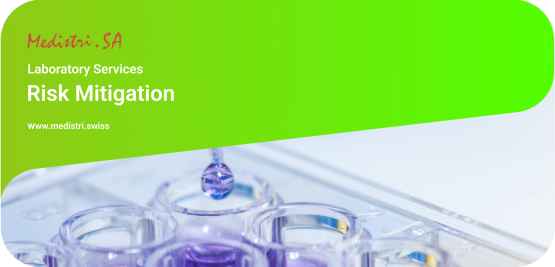(Download: Risk Mitigation in PDF by Medistri)
Risk mitigation through testing in the biocompatibility scenario is a crucial step in the evaluation of medical devices. It involves assessing the biocompatibility of the materials and processes used in the device by taking a risk-based approach to their biological safety evaluations.
Risk mitigation in biocompatibility testing is a systematic process that involves several steps:
- Biological Evaluation Plan: This is the first step where the risk is identified. It involves understanding the materials, processing, and historical use of the device.
- Biological Evaluation of the Medical Device: This is where the actual risk mitigation through testing happens. The biocompatibility tests reflect up to 8 different biological effects. These tests are designed to evaluate the potential biological hazards associated with the use of the medical device.
- Biological Evaluation Report: This is the final step where the results from the biocompatibility tests are evaluated. A comprehensive assessment of the biological responses for each medical device concerning its safety is made.
Risk mitigation through biocompatibility testing is a critical aspect of medical device development and manufacturing. It helps ensure patient safety, meet regulatory requirements, maintain product quality and efficacy, build public trust, and avoid legal and financial repercussions.
If a device fails any of the biocompatibility tests, the manufacturer must address the issue. This could involve changing the materials or manufacturing processes used, or adding warnings about potential adverse reactions. The goal is to reduce the risk to an acceptable level, in line with regulatory requirements. It’s important to note that risk mitigation is an ongoing process. Even after a device is on the market, manufacturers must continue to monitor its performance and investigate any reports of adverse reactions.
The main objective of this process is to protect individuals against potential biological hazards by using medical devices through a biological evaluation, compilation of historical data, and reference tests. This allows for a comprehensive assessment of biological responses for each medical device in relation to its safety.
It’s important to note that the tests required to verify biocompatibility differ by the type of device (surface contact, implantable), type of contact (skin, mucous membrane, wound area, tissue, bone, dentine, bloodstream, blood…), the contact time (limited, prolonged or permanent) and the historical data existing on the material used.
An example of a medical device that has undergone biocompatibility testing is a pacemaker. A pacemaker is a small device that’s placed under the skin in your chest to help control your heartbeat. It’s used to help your heart beat more regularly if you have an irregular heartbeat (arrhythmia).
The materials used in a pacemaker, such as the casing, electronic components, and leads that connect to the heart, all undergo extensive biocompatibility testing. This is to ensure that they do not cause adverse reactions when implanted in the body
The tests include, but are not limited to:
- Cytotoxicity tests to ensure the materials do not cause cell death.
- Sensitization tests to ensure the materials do not cause allergic reactions.
- Irritation or intracutaneous reactivity tests to ensure the materials do not cause skin irritation.
- Systemic toxicity tests to ensure the materials do not cause toxic effects in the body.
- Genotoxicity tests to ensure the materials do not damage genetic information within cells.
- Implantation tests to evaluate the local effects on living tissues in contact with the material after implantation.
- Hemocompatibility tests to ensure the materials do not negatively interact with blood.
- Carcinogenicity tests to ensure the materials do not induce cancer.
The standard related to risk mitigation in biocompatibility is ISO 10993-1:2018. This international standard, titled “Biological evaluation of medical devices - Part 1: Evaluation and testing within a risk management process”, provides guidelines for the biological evaluation of medical devices. It emphasizes the importance of risk management in the biological evaluation of medical devices.
👉 The primary aim of this standard is to protect humans from potential biological risks arising from the use of medical devices. The FDA also refers to this standard in their biocompatibility guidance.
Medistri can guide medical device manufacturers through the complex process of biocompatibility testing, ensuring safety, efficacy, and compliance with ISO 10993-1:2018 standards, thereby fostering trust in their products.
🎯 To learn more about Medistri’s Risk Mitigation, visit on our website here or directly contact our team at contact@medistri.swiss.
- The Medistri Team
#Medistri
